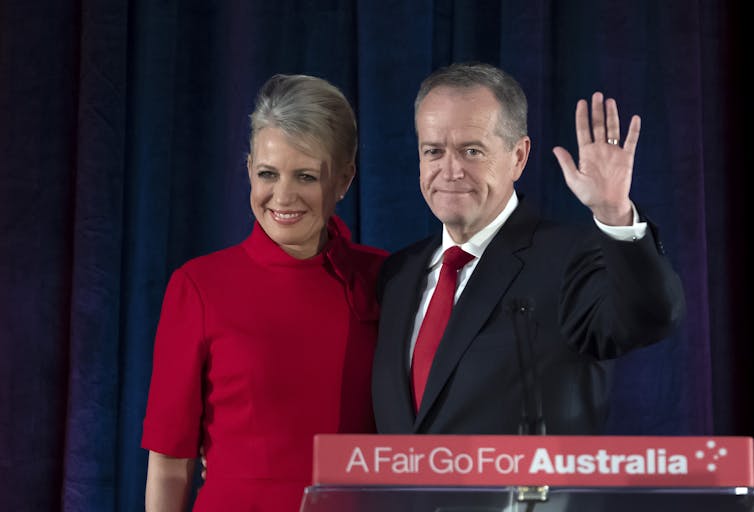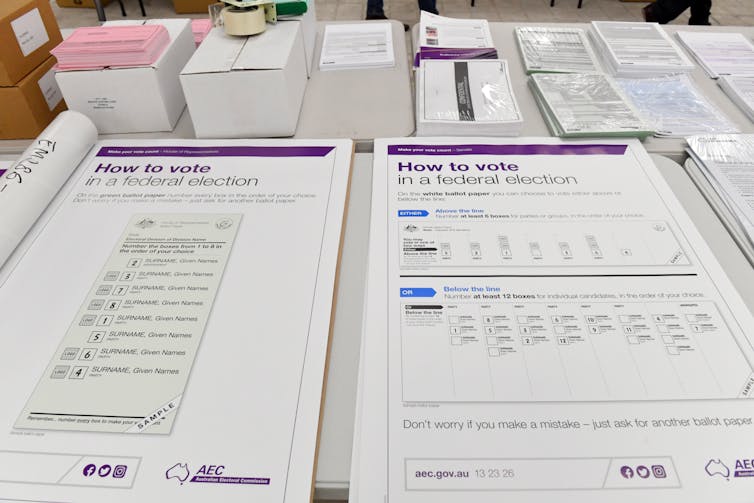Source: The Conversation (Au and NZ) – By Rodney Tiffen, Emeritus Professor, Department of Government and International Relations, University of Sydney
The single most important measure in Australian election polls is the two-party preferred vote (2PP). It captures the two central characteristics of Australian House of Representatives elections: that it is a preferential voting system, in which the flow of preferences can be crucial in determining who wins a seat; and that the crucial contest to form the next government is a two-sided battle between Labor and the Coalition.
It is usually a good, although not infallible, indicator of which party will win. In 24 of the 29 elections since the second world war, the party that has surpassed 50% of the 2PP has won. The five exceptions were 1954 (Coalition 49.3), 1961 (Coalition 49.5), 1969 (Coalition 49.8), 1990 (Labor 49.9) and 1998 (when John Howard’s 48.9 was the lowest ever winning percentage).
All five exceptions were won by the government of the day, testimony to their ability sometimes to hold onto marginal seats and defy the national trend. In the first three, another factor was a greater disproportion in electorate sizes, favouring the Coalition with smaller rural electorates.
Australian elections tend to be fairly close. In 19 of the 29 elections the winner’s 2PP was under 53%. The Coalition’s biggest victories were in 1966 (56.9%), 1975 (55.7%) and 1977 (54.6%). Labor has never secured such a large share of the vote. Its biggest victories have been 1946 (53.7%), 1983 (53.2%), 1972 and 2007 (both 52.7).
Read more:
As the election campaign begins, what do the polls say, and can we trust them this time?
The 2PP figures of Labor against the Coalition from the major pollsters when Prime Minister Scott Morrison called the election were: Essential 52-48, Newspoll 54-46, Ipsos 55-45, Resolve 55-45, and Morgan 57-43. History suggests it is unlikely Labor will secure any more than 53%, so it is likely there will be some tightening of the polls.
Because of the abject failure of the polls at the 2019 election, people will rightly view them with more scepticism this time. In a penetrating review, the Association of Market and Social Research Organisations (AMSRO) called it a polling failure – the polls erred by a statistically significant margin, all erred in the same direction, and the source of error was the polls themselves rather than any last-minute shift among voters. Labor had won 55 Newspolls in a row leading up to its election defeat.

AAP/Andy Brownbill
In the election, the Coalition’s primary vote was 41.4%. Essential had it at 38.5, Ipsos at 39, Newspoll 38, Roy Morgan 38.5 and YouGov/Galaxy 39. Similarly, nearly all of them overestimated the Labor vote by similar margins.
The AMSRO review concluded the main reason for the failure was unrepresentative samples. Samples were skewed towards more politically engaged and better-educated voters, and this over-represented Labor voters. It observed that 17 of the 25 final poll results since 2010 overestimated 2PP support for Labor.
Social changes have made polling more difficult. The proportion of homes having fixed telephone lines has dropped sharply, and the ability and willingness to participate in online polls is still somewhat uneven. Resistance also seems to have grown: even between 2009 and 2019, survey response rates dropped from 35% to 11% in telephone surveys.
The pollsters have a lot at stake in being seen to do well at this election. But there is one important aspect where the national polls will be of no use.
The main type of contest where the 2PP is of no benefit and where the national polls fail to illuminate what is happening is in what the Australian Electoral Commission calls “non-classic” contests: that is, electorates where the main competition is between an independent and one of the major parties, or between one of the major parties and a minor party.
The major parties’ share of the vote has been in long-term decline. This is much more pronounced in the Senate. Whereas their combined vote in the upper house a few decades ago was typically over 90%; now it is usually in the 70s.
In 2022, the crossbench already has six members (if we exclude the temporary aberration of Liberal defector Craig Kelly currently being there), and there has been a very strong push for the “teal” independents in many electorates. It seems these candidates are reflecting a strong current of sentiment among the public.

AAP/Mick Tsikas
It is quite unpredictable whether this push will continue strongly through the campaign (when the focus tends to be increasingly on the major parties). However, there is a real chance the numbers on the crossbench will increase and perhaps even hold the balance of power.
The national polls are useless in guiding us about which of these electorates might see the sitting member defeated. Electorate polling can help, but remember, a sample of 1,000 has a margin of error of plus or minus three, whether extrapolating to the whole nation or just to a single electorate.
Two points about the 2019 election are both true. It was a disaster for Labor, most obviously that against the expectations of most, it lost. But in addition, it ended up further from government. There was a swing of 1.1% to the Coalition (only the seventh time of 29 in which there has been a swing to a sitting government).
Moreover, there were strong swings against Labor in several marginal seats, especially in Queensland. Capricornia, for example, was on knife-edge before 2019 requiring swing of 0.6% for Labor to win, but now has a 12.4% buffer. Now a uniform swing to Labor would yield just three seats.
Read more:
Where are the most marginal seats, and who might win them?
The 2019 results had lots of drama: 92 electorates swung to the Coalition and 59 to Labor. Queensland had a swing of 4.3% to the Coalition; Victoria 1.3% to Labor. We can expect a lot of diversity in the 2022 results also.
However, the end result in 2019 was almost a status quo House of Representatives, which is very finely balanced. The current state of the House’s 151 seats is: Coalition 76, Labor 68 and crossbench seven (including Kelly). My guess is the other six crossbench members – Bob Katter, Andrew Wilkie, Adam Bandt (Greens), Zali Steggall, Rebekah Sharkie and Helen Haines – will all be re-elected, with at least one or two additions to their number.
In most Australian postwar elections there has been a swing against the government (22/29), but only seven resulted in that government’s defeat. Around half (15/29) have generated swings of 3% or more.
Whether or not the campaign is interesting, the vote count is likely to generate a lot of drama.
![]()
Rodney Tiffen does not work for, consult, own shares in or receive funding from any company or organisation that would benefit from this article, and has disclosed no relevant affiliations beyond their academic appointment.
– ref. Explainer: how to read political polls – and why we can expect a lot of drama on election night – https://theconversation.com/explainer-how-to-read-political-polls-and-why-we-can-expect-a-lot-of-drama-on-election-night-181477







